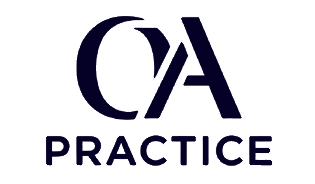D444 Adult Health I - Set 1 - Part 1
Test your knowledge of technical writing concepts with these practice questions. Each question includes detailed explanations to help you understand the correct answers.
Question 1: A nurse caring for a patient with pneumonia notices yellow sputum production and crackles during auscultation. Which intervention should take priority to prevent the most serious complication of this respiratory infection?
Question 2: Your patient with COPD has a carbon dioxide level of sixty-five. What immediate intervention indicates your understanding of managing hypercapnic respiratory failure in this critical situation?
Question 3: A patient presents with severe eye pain, nausea, vomiting, and halos around lights. Which type of glaucoma requires immediate intervention with osmotic diuretics to prevent permanent vision loss?
Question 4: After chemical exposure to the eye, what is the most critical initial nursing action regardless of whether the substance is acid or alkaline in nature?
Question 5: Which medication combination poses the greatest hepatotoxic risk when a patient with tuberculosis also has chronic pain requiring acetaminophen for management?
Question 6: A patient with esophageal varices begins vomiting blood. Besides blood transfusion, which intervention is contraindicated due to the risk of causing additional hemorrhage?
Question 7: Your patient with Crohn's disease experiences five to six loose stools daily with right lower quadrant pain. Which long-term medication approach best manages the inflammatory process?
Question 8: A COPD patient presents with pink skin, pursed-lip breathing, and barrel chest. What oxygen saturation range indicates appropriate management for this emphysema presentation?
Question 9: During tuberculosis treatment with rifampin, a patient reports orange-colored tears. What teaching point is most important for preventing complications from this expected side effect?
Question 10: A patient with myasthenia gravis experiences increasing muscle weakness despite taking pyridostigmine. Which assessment finding indicates a cholinergic crisis requiring immediate intervention?
Question 11: Which laboratory finding in a patient with cirrhosis indicates the development of hepatic encephalopathy requiring immediate lactulose administration?
Question 12: A patient develops hives, dyspnea, and hypotension after antibiotic administration. After giving epinephrine, which expected side effect confirms the medication is working effectively?
Question 13: Your patient with acute pancreatitis has elevated lipase and amylase levels. Which dietary modification is most critical for preventing further pancreatic inflammation?
Question 14: A nurse assesses a patient with suspected H. pylori infection. Which medication class is contraindicated and could worsen gastric ulceration in this condition?
Question 15: Following cataract surgery, which patient activity poses the greatest risk for increased intraocular pressure and potential surgical complications?
Question 16: A patient with celiac disease asks about breakfast options. Which food choice indicates proper understanding of required dietary restrictions for managing this condition?
Question 17: During an asthma attack, which assessment finding requires the most immediate intervention to prevent respiratory failure?
Question 18: Which isolation precaution requires a fitted N95 mask and negative pressure room for a patient diagnosed with active pulmonary tuberculosis?
Question 19: A patient taking isoniazid for tuberculosis reports numbness and tingling in extremities. Which vitamin supplementation prevents this peripheral neuropathy side effect?
Question 20: Your patient with GERD experiences nighttime heartburn. Which positioning intervention most effectively reduces nocturnal acid reflux episodes?
Need Guaranteed Results?
Our exam support service guarantees you'll pass your OA on the first attempt. Pay only after you pass!
Get Exam Support